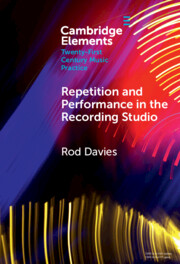Element contents
Repetition and Performance in the Recording Studio
Published online by Cambridge University Press: 12 February 2024
Summary
- Type
- Element
- Information
- Online ISBN: 9781009253789Publisher: Cambridge University PressPrint publication: 14 March 2024



